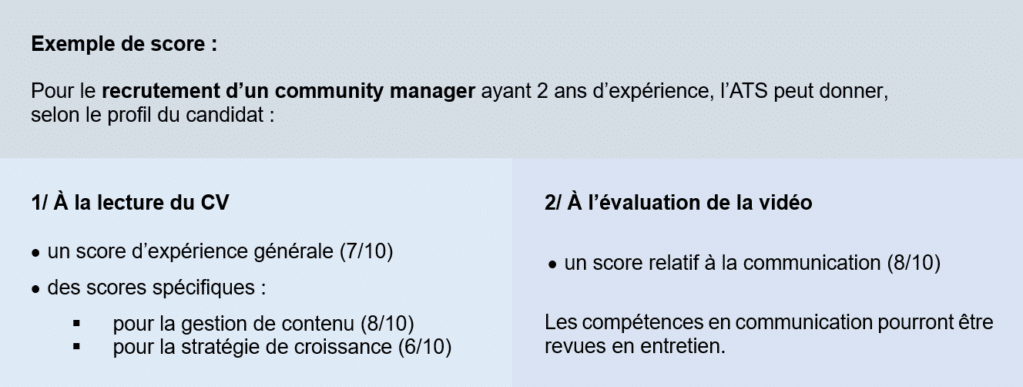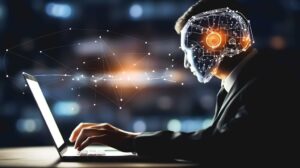Will artificial intelligence (AI) keep all its promises in the face of HR expectations? Optimize processes to save time and efficiency. Reduce human bias and risks of discrimination. Carry out predictive skills management. So many concrete uses to experiment with. Update with Erwan Barbier, trainer specializing in artificial intelligence and recruitment.

The human resources function is rich!
Management of social relations, training, payroll, recruitment, employer branding, prevention of psychosocial risks, administrative personnel management... So many subjects that occupy HR professionals on a daily basis. Without forgetting that, for the most part, they come with legal and accounting obligations…
All of this comes in many formats, with multiple stakeholders and varied data sources. In other words, there is enormous potential for optimization. This is why, asother company services, the HR function benefits from integrating artificial intelligence into its daily life.
Moreover, theusing ChatGPT has become widespread: analysis of CVs, generation of LinkedIn posts for the employer brand or even preparation of job offer models. It is a market estimated at $650 million in 2024 according to Precedence Research. And still according to the Canadian strategy consulting company, it could reach $1.6 billion in 2030. permanent innovations indeed multiply the potential uses of AI in HR. And software publishers are not left out!
So, what are the uses of AI in HR? Those of today, but also those of tomorrow…
AI to better manage psychosocial risks
Detection of burn-out, anxiety, etc. Different tools are being developed.
Thus, research carried out in Switzerland on a selection of Reddit articles made it possible toidentify cases of burn-out in 93 % based on messages posted on forums. This is what we know in an article in Engineering Techniques relating to the preventive detection of burn-out.
DataForEthique, a French start-up, specializes in semantic analysis. The solution, first developed for cyberharassment, also makes it possible to analyze and categorize psychosocial risks based on email exchanges and on Teams.
For its part, Google offers the WYSA chatbot, an application dedicated to anxiety detection and which allows you to get in touch with a professional. In March 2022, another chatbot, named Emohaa, developed and tested in China, reduced anxiety symptoms in 4 weeks.
Of course, for the employees concerned, the tools cannot replace professional help. On the other hand, on the HR side, you can start to take an interest in trend analyses: are there periods more conducive to psychosocial risks? And optionally, can you anticipate them ?
Limit discrimination during recruitment
According to Marko Vujasinovic, founder of Meteojob, the use of artificial intelligence is well received by candidates. They are in fact 30 % to consider that the tool, used well, can make it possible to reduce discrimination in hiring.
In this area, it is ATS (applicant tracking system), i.e. application tracking software.
Let us cite, for example, the French Lucca. It offers a complete HRIS with marketplace partners like Tool4staffing. This increases the capacity of the ATS which can then identify rare talents using machine learning.
Another example: specialized ATSs (CodeSignal, HireVue) or, more recently, large ones like Indeed, can easily analyze people's voices. They are used in shortlisting candidates from recorded video interviews. According to CleverConnect, this saves 80 % of time on application filtering. And it is also more effective in detecting the motivation of candidates.
According to HireVue, Nestlé's implementation of video interview pre-screening, which began in 2012, allows outsourced HR teams to view the videos. The result is more flexibility for HR teams and fairer processing of applications. With the new versions including semantic analysis, the satisfaction rate of HR teams reached 92 %.
Finally, HireVue analyzes the candidate's choice of words and expression with an AI to generate a score integrated into its ATS. The results allow candidates to be classified into categories which are presented in a report generated by the application or even integrated into Power BI, Microsoft's data analysis and representation tool. You can then easily compare the results of different candidates. An application like CodeSignal allows you to achieve this integration for technical profiles.

Generative AI: the different uses of ChatGPT
Creating editorial content for social media communication is easy with a prompt. For example: “Write a 5-line post to recruit a web designer”.
With some tools like Mistral AI, Perplexity or Gemini (formerly Bard), you can enrich it. By giving an example of the text you write, the content will be adapted to your style.
More simply, the integration of Copilot with Microsoft Office 365 Business allows the generation of content from internal data. What if you tested it to generate content for theon boarding ?
Predictive skills management
According to a study conducted by Gallup, employee motivation allows a productivity gain of 31 % and increases turnover by 37 %. But, still according to Gallup, 18 % of employees are demotivated at work. Personalized support for career and skills development is then part of the solutions. HR services can rely on different skills management tools or LMS (learning management systems).
Thanks to LMS integrating AI modules like Open edX or Moodle, you can quickly build tailor-made courses for your teams by more precisely identifying their needs. Still others, like Zavvy, EdApp or Docebo, also integrate AI functionalities for defining personalized training courses, automatic grading and generating quizzes.
According to Zavvy, 83 % organizations have been using an LMS and 75 % for more than 2 years. AI tools are therefore already present in many companies. Today, the challenge lies in the ability of companies to appropriate the help provided by AI.
For its part, the French start-up SkillsBoard considers that 90 % of learning is informal. It therefore offers a skills management tool which generates a global skills matrix for the company, as well as a training passport per employee. Conversely, an AI analysis like Eightfold.ai makes it possible to convert the training provided in the passport into skills.
Teleworking management: AI to the rescue
According to a Stanford University study, 55 million employees in the United States work remotely. However, it is said, according to several other studies, that the annual cost of a workstation is around €11,000. It is therefore not surprising that different workspace management solutions, including AI, are emerging.
The company Inspace initially offers a workspace management tool. This tool allows you to predict the number of employees present on a site over a given period.
To improve the predictivity of the model, the company IOT Factory produces a presence sensor based on temperature. Its LoRaWAN tool makes it possible to detect used or free offices.
The French company Ubigreen offers a workspace management and flex office space reservation tool. This includes temperature sensors placed under desks.
For its part, the RobinPowered application gives teams the flexibility to decide, among themselves, when they want to work in the office. And above all next to whom.
By combining the 2 technologies (AI + sensors), you can integrate a reliable predictive model of your use of workspaces. This allows:
- not only reduce costs
- but also to facilitate the reservation of work spaces and therefore to motivate teams to come on site
To conclude, artificial intelligence is everywhere. And everyone is as much obliged to use it as they are encouraged to be wary of it. Explaining the uses of artificial intelligence in the company helps maintain and strengthen team confidence. Reassuring element: AI is a decision support tool, like a dashboard. You now have all the cards in hand to ensure that the human resources profession remains... human!





